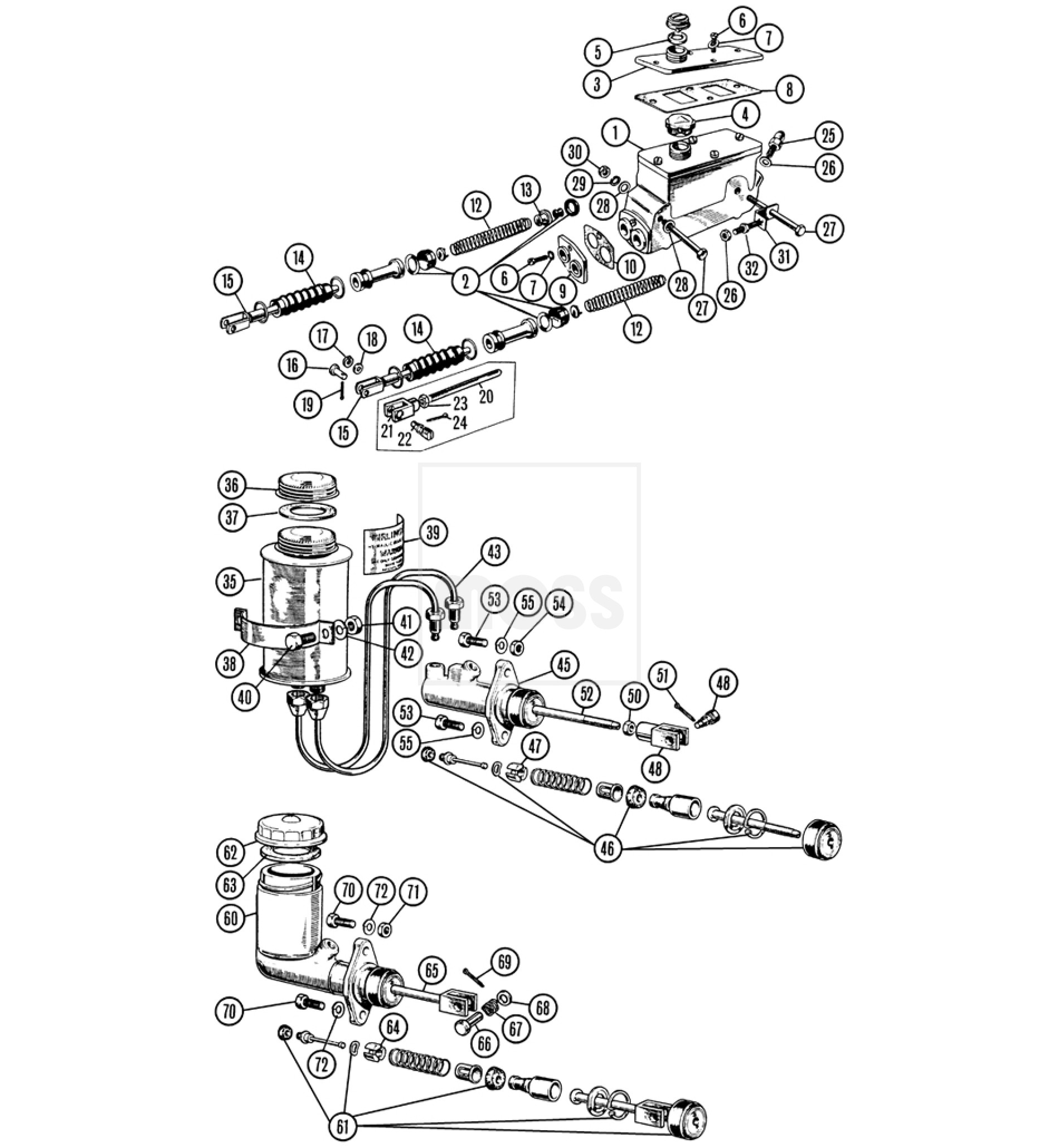Disc brake suddenly locked up
Comments
-
Classic fail, Motorbikes (mostly) and cars run open systems and bike srun closed sealed systems, so cars and bikes absorb through the ventilation, this has breen covered on here dozens of times before, also initially absorbing water REDUCES the volume, not increases it, debunking the silly theory you espound only you are chossing to ignore it.
Open the top of your car master cylinder and the first thing you will see is a great big rubber seal sitting on top of the fluid separating the fluid from the air in the expansion chamber above.
ALL brake systems are sealed. None vent to the atmosphere in any way.
Automotive systems are also flushed every two years as part of normal servicing.
Water in calipers from passing seals usually shows as a loss of free stroke and discs scuffing as the rectangular seals which are what retracts the pistons and also controls the auto pad position, don't function correctly with thinned out fluid due to water contamination.
After a while more water in the system will pump up the system to an overfilled state.
This usually presents as scuffing or stuck discs.
Often with mild contamination it presents at the first pad change when it is no longer able to fit new pads in due to overfilling.
FFS, your haven't got a clue on this subject, go do some research.0 -
I've looked in many car systems and none have a big rubber 'seal' (it would be a diaphragm for very obvious reasons not a seal wouldn't it?).....all have vented to atmosphere (there are a very few that don't - motorbikes with seasled systems are more common than cars, but still far from universal) hence the need to change - which is longer than 2 years as well by the way, so I'm sorry it's you that haven't a clue.
P.S I work in the motor industry and have done for 26 years.Currently riding a Whyte T130C, X0 drivetrain, Magura Trail brakes converted to mixed wheel size (homebuilt wheels) with 140mm Fox 34 Rhythm and RP23 suspension. 12.2Kg.0 -
Automotive systems are open to the atmosphere so the fluid absorbs water over time. This has the effect of lowering the boiling point of the fluid so it has to be replaced periodically. The time period depends on the fluid used. DOT3, DOT4 or DOT5.1 absorb water at different rates, DOT3 is the slowest so has the longest change interval. Water absorption doesn't pump up the system as the systems are designed to cope with changes in fluid volume as the pads wear and are replaced.
Unfortunately I've been in the motor trade longer than Rookie.0 -
Thank you all for your input - the mechanic said it was the result of water being absorbed by the DOT fluid. A quick change on both front and rear (was only charged for the one though - result!), and everything is great again.
 0
0 -
Which of course he had no way of knowing.....probably overfilled.Currently riding a Whyte T130C, X0 drivetrain, Magura Trail brakes converted to mixed wheel size (homebuilt wheels) with 140mm Fox 34 Rhythm and RP23 suspension. 12.2Kg.0
-
Which of course he had no way of knowing.....probably overfilled.
Which of course you also have no way of knowing, assuming you haven't physically examined the bike.
What's important is the action the mechanic took has rectified the fault, the soothing words he offered as explanation don't matter 0
0 -
Automotive systems are open to the atmosphere so the fluid absorbs water over time. This has the effect of lowering the boiling point of the fluid so it has to be replaced periodically. The time period depends on the fluid used. DOT3, DOT4 or DOT5.1 absorb water at different rates, DOT3 is the slowest so has the longest change interval. Water absorption doesn't pump up the system as the systems are designed to cope with changes in fluid volume as the pads wear and are replaced.
Unfortunately I've been in the motor trade longer than Rookie.
Correct, automotive systems are open to atmosphere. The system that is, not the fluid.
The cap is vented but underneath is a seal/diaphragm, whatever you wish to call it, that separates the fluid from atmosphere.
So yes vented to atmosphere for prevention of pressure build up, but also isolated from the atmosphere to prevent water absorption.
They also differ in that they have secondary sealing in the way of boots on the caliper to keep dust and superficial water away.
Being open pressure wise prevents pad pump-up due to moisture, unlike a bike system, so not a problem.
Feel free to link up some automotive system exploded diagram to dispute that the fluid is isolated from atmosphere.0 -
Nope, I've just checked all four cars in the family, non have a diaphragm, the newest is a 14 plate Fiesta, the oldest my 53 BMW, they have a mesh to stop debris falling in, but no diaphragm.
I'm sure you'll be able to produce a photo?Currently riding a Whyte T130C, X0 drivetrain, Magura Trail brakes converted to mixed wheel size (homebuilt wheels) with 140mm Fox 34 Rhythm and RP23 suspension. 12.2Kg.0 -
-
Try looking inside the lid if none is obvious.0
-
Perhaps you could read my previous post where I stated my experience?
Any diaphragm would have to operate over a circa 1" stroke (Max to min on the reservoir), think about that as well. It's not uncommon to have a disc of rubber that acts to control the ventilation, but doesn't stop it.....maybe that is what you are getting confused by?Currently riding a Whyte T130C, X0 drivetrain, Magura Trail brakes converted to mixed wheel size (homebuilt wheels) with 140mm Fox 34 Rhythm and RP23 suspension. 12.2Kg.0 -
OK, of similar vintage to the Mustang here we have 1953 Lockheed cylinder for TR2 with drums through the disc braked TR3 and 3A with separate reservoir to the Girling braked TR4A on discs with integral reservoir. On all 3 very different systems you'll note the complete absence of diaphragms.

Let me know if you want more diagrams of automotive systems without diaphragms, some of the microfiches might be hard to reproduce on here but I have hundreds of them.0


